Indian Trans Women Bridge Social Gaps with Public Art Projects
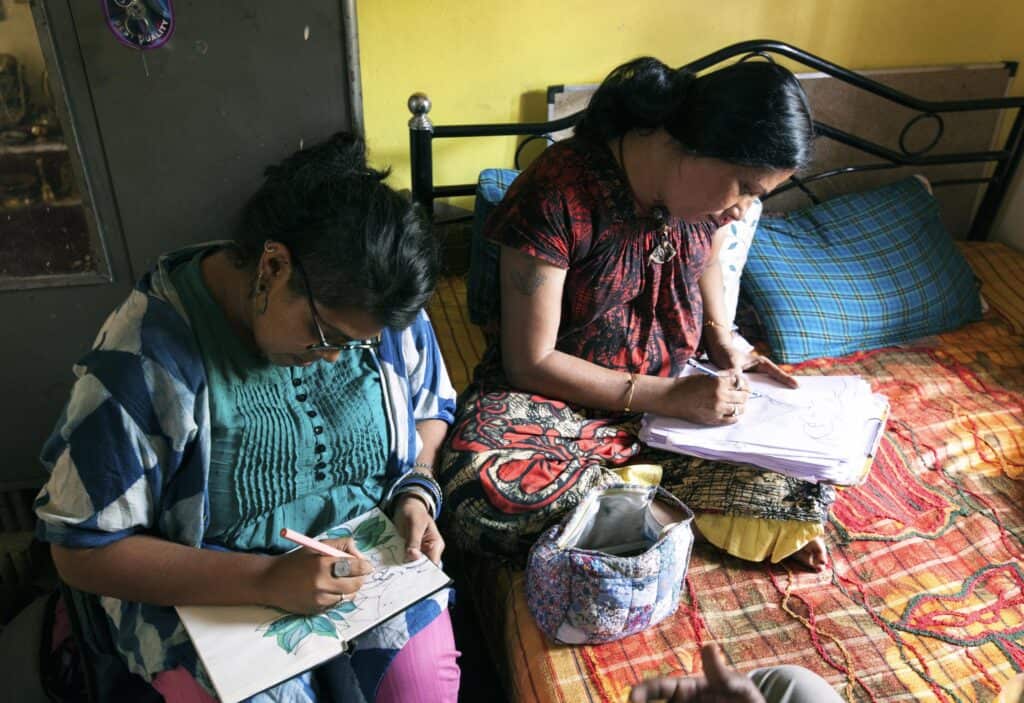
||||||
"In India, members of the transgender community have always been polarized — revered as holy beings or reviled for being different. The Aravani Art Project sought to change this by creating safe spaces for them to express themselves."
By Noor Anand Chawla
At the heart of the capital city of India, sits a larger-than-life mural made by Bengaluru-based trans-women and cis-women-led art collective, the Aravani Art Project. The mural, gracing the N. P. co-educational senior secondary government school in Lodhi Colony, New Delhi, consists of eleven figures. Some smile coyly, others frown their disapproval, while a few wear a resigned look that comes with experience and wisdom. Bold patterns in vivid hues on their clothing tie them together, intermingling until it’s impossible to know where one’s saree ends and the other’s Madras-checked shirt begins. This striking work of art represents the vastly differing cultures that India consists of and is inspired by the many people the art collective has worked with in the past.
Since its inception in 2016, the Aravani Art Project has channeled the talent and passion of its members to create art as a social practice. Through large-scale projects that span the length and breadth of India, they have raised awareness of how art can spark conversations between cis and trans people and create space for acceptance. Along with empowering women to recognize the power of art as a respected medium of self-expression, the art collective creates opportunities for alternative sources of income.
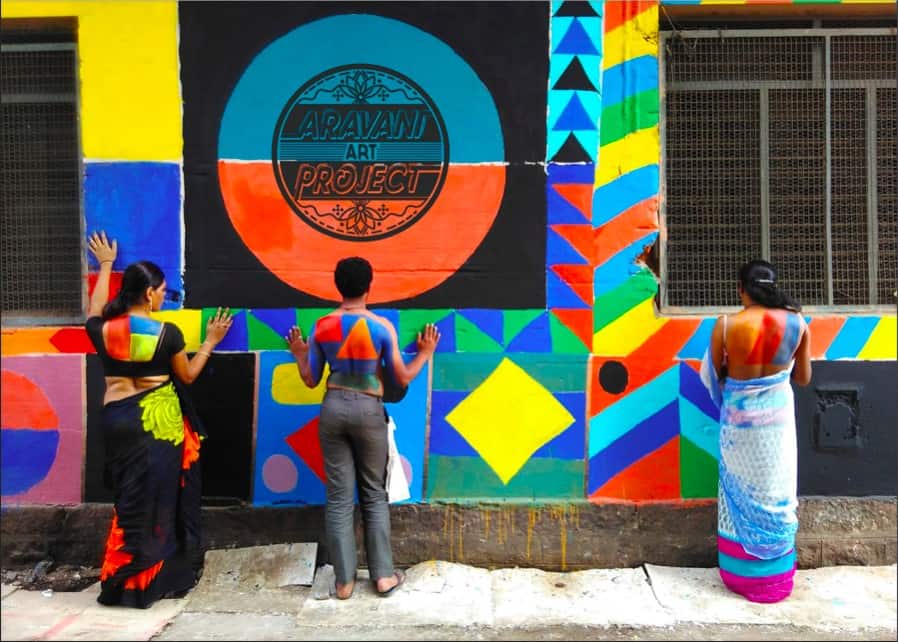
In India, trans women, known as hijras or aravanis, have always been called upon to bestow their blessings at auspicious occasions like marriages and births, inspired by Shikhandi, an important transgender character in the Hindu mythological epic Mahabharata. As this character played a positive and important role in that epic, all trans people are held in high esteem in this context even today. They are usually gifted a large sum of money in return for their blessings.
Members of the Aravani Art Project come from poor backgrounds and have access to little or no education. So for transwomen in India, the easiest ways of earning a living include performing blessing duties, performing sex work, or in the worst cases begging for alms.
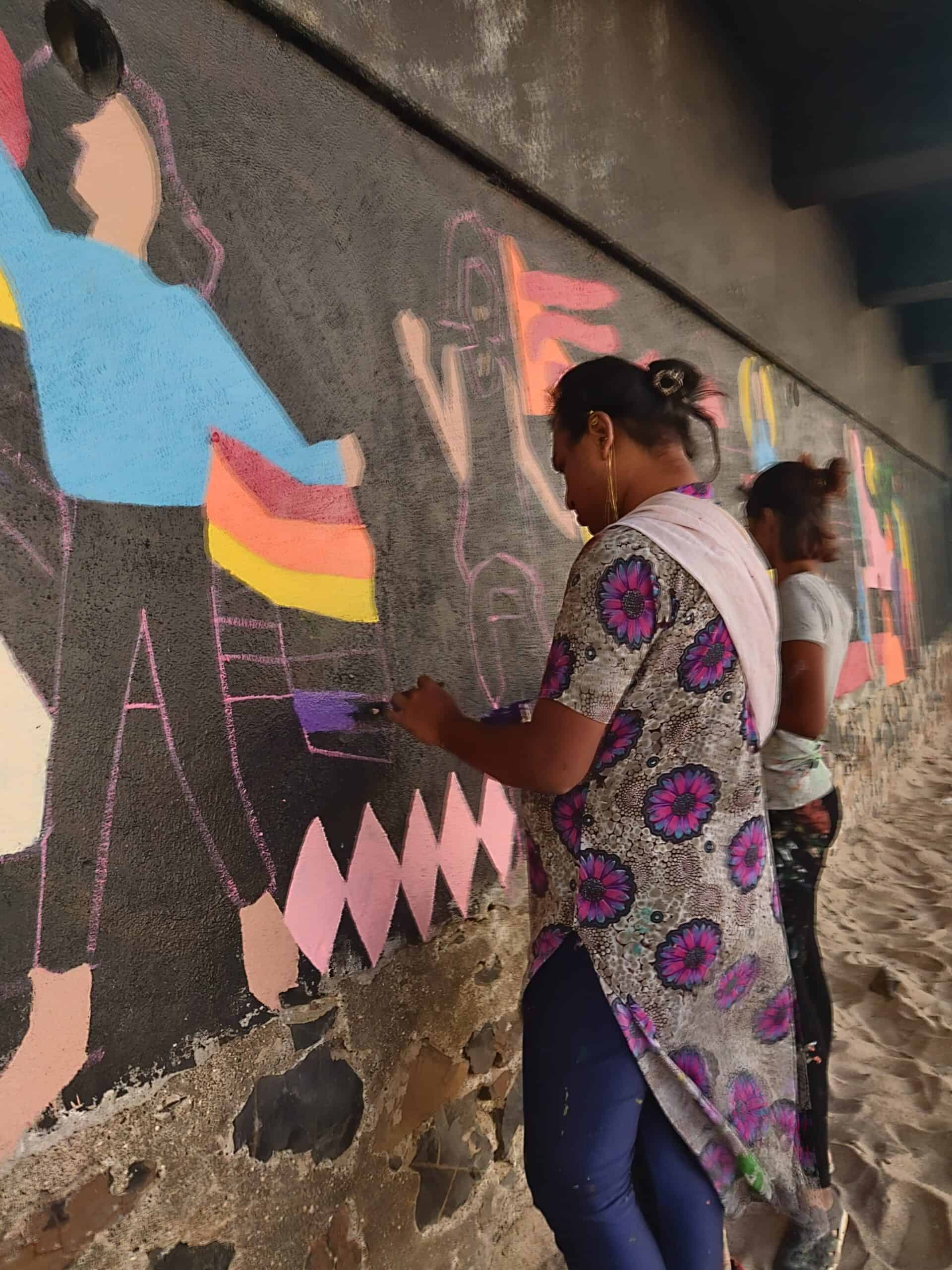
Poornima Sukumar, artist, and founder of Aravani Art Project, recalls how it began,
“I was part of an international documentary that was filming a group of transgender people in India and I made many friends in the community during that process. Since the rest of the film crew was international, they also found it easier to be friendly with me. After 3.5 years, when the documentary was completed, they wanted to continue working together and I felt I couldn’t leave them in the lurch.”
As her training lay in arts education, she realized that sharing arts practices was the best way to empower her new friends. They started by painting on walls in available public spaces, as her students weren’t interested in the theory of art or learning in a traditional classroom setup. The sizes of their canvas’ in the open-air environment empowered them further.
“Public art can be very intimidating to create. However, I figured that if painting on public walls could be so liberating for me as a person from a privileged background, then these trans women would feel that liberation so much more, and it would allow people to see them in a different light. The streets are also important because it is in these public spaces that the bodies of transgender identifying people encounter violence, harassment, social negligence, and pressure,” Sukumar adds.
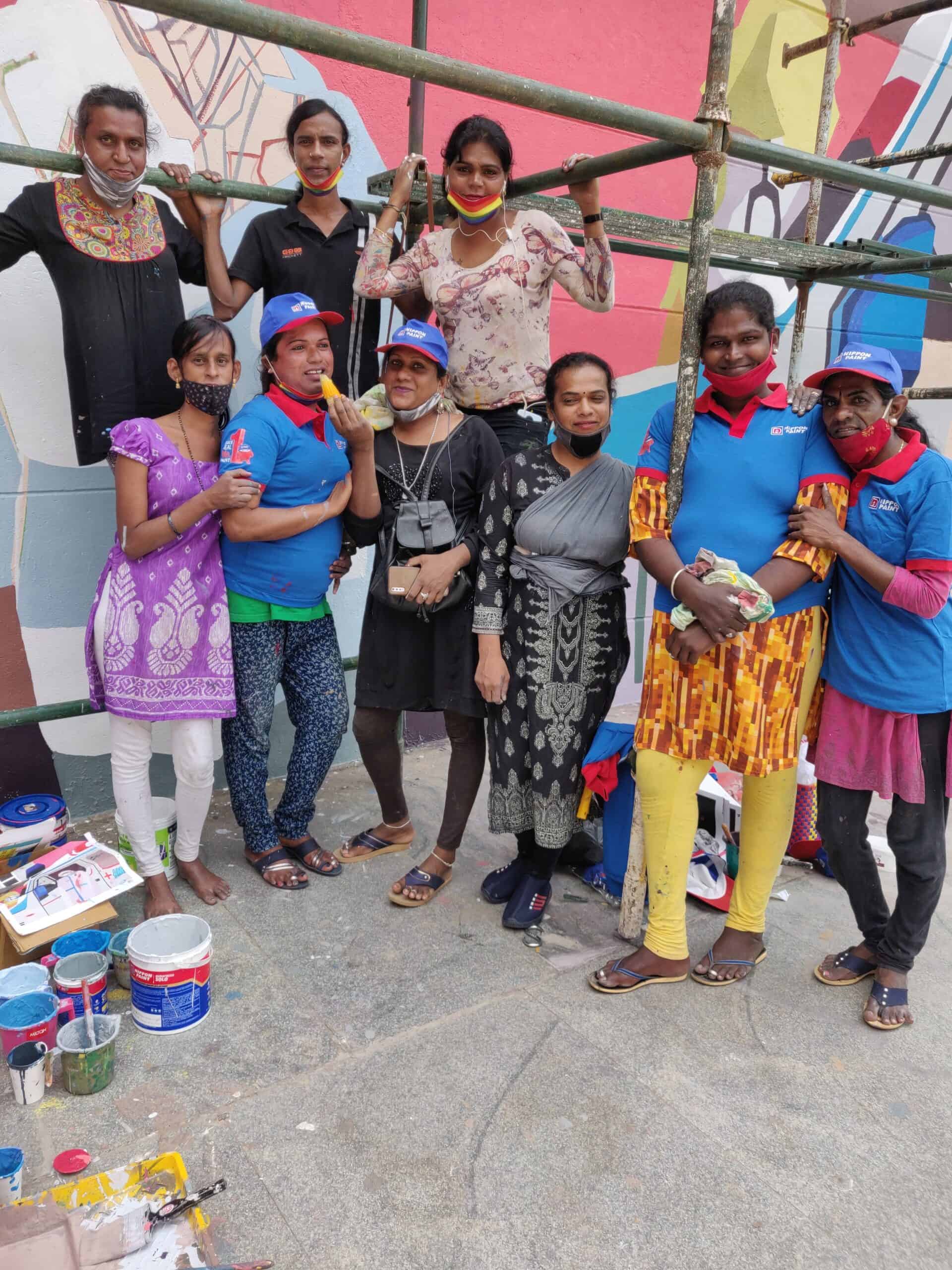
In 2016, they started by painting a few walls without any agenda or deadline, but slowly their efforts blossomed into something much larger.
In India, members of the transgender community have always been polarized — revered as holy beings or reviled for being different. The Aravani Art Project sought to change this by creating safe spaces for them to express themselves. Seven years, and nearly 300 projects later, Aravani artists have created art for schools, arts institutions, and private projects. They have also received a number of prestigious grants and residencies and displayed their work at renowned gatherings like the India Art Fair. As a registered organization with the government, they have been able to gain more recognition for their work. This has led to more commissioned work to paint for government infrastructure projects as well as large corporate institutions, which Sukumar believes will help sustain their work in the long run and enable them to train more people in the arts.
The results are expansive. Shanthi Muniswamy, a trans artist, poet, and blogger shared more about the fulfillment she feels every time she works on a project.
“Travelling to other states for projects allowed me to meet and interact with my community personally and deeply. I also witnessed people across communities living together seamlessly. There was no room for biases, as love ruled there. I overcame my fear of heights and climbed a wall that was more than 40ft …The process of watching the wall art come together after five days of being with the community, was emotional and satisfying.”
As fulfilling as the work is, however, there are challenges too. The biggest of which was the initial resistance within the community. Sukumar shared that though the transgender community had the zest to do something, they found it difficult to understand the merits of working with art. “They would question whether this knowledge we were teaching them would prove useful in any way. They wondered if it would benefit them. Fortunately, they have seen the impact for themselves over the years, and now they have become advocates of the program themselves,” she says.
Sukumar summarizes, “We have changed perspective and made it easier for people to have conversations around this subject. Now my team members are seen as artists first and transgender people later, which makes it so much easier for people to approach them and interact with them. Art mitigates the social gap and I feel this is our greatest impact.”
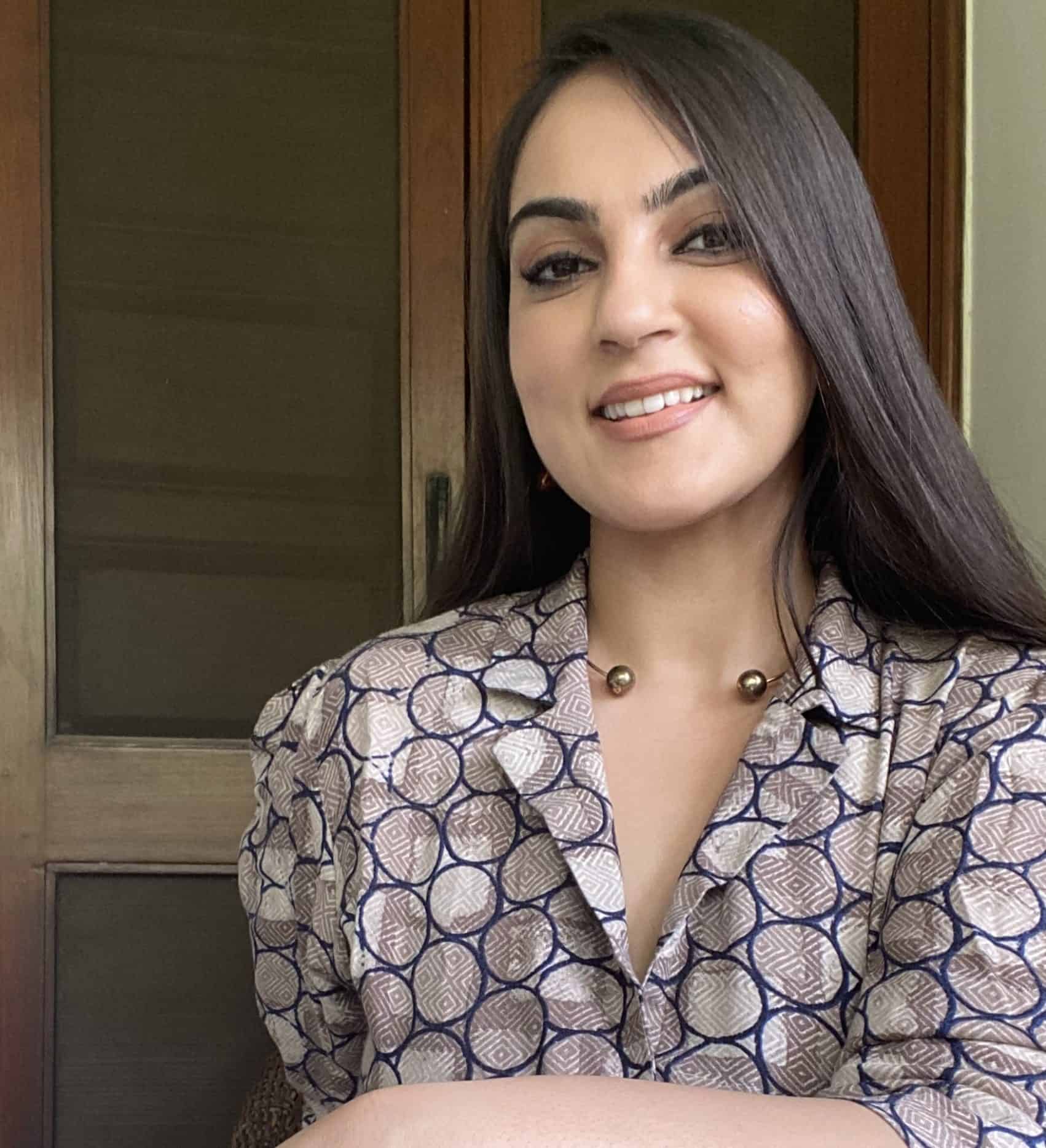
Noor Anand Chawla is an independent journalist based in New Delhi, India who contributes to various Indian and international publications such as the Christian Science Monitor, ARTNews, Reader’s Digest, and others. She writes on travel, fashion, art, food, health, tech, and other lifestyle subjects.
A lawyer by training, she pursued her passion for writing through her blog www.nooranandchawla.com and this paved the way for journalism. She was recently awarded the title of being India’s Top 40 English language journalists under 40 by the exchange4media group.
She creates visual lifestyle content on Instagram as @nooranandchawla. Noor lives with her family and enjoys traveling and reading books in her free time.